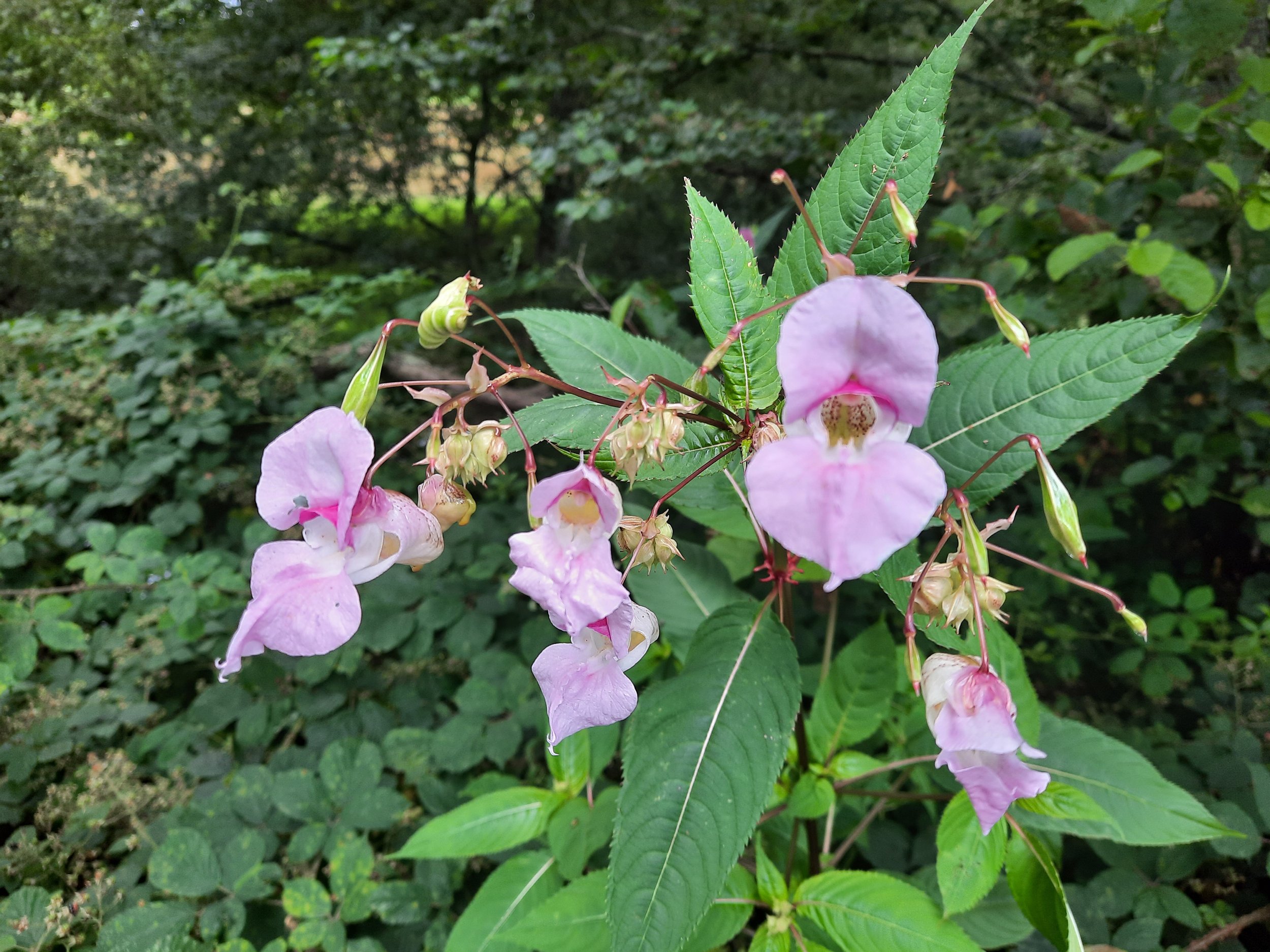Helping curb Himalayan Balsam
A visitor to our stall at the Trotton Fete last year suggested ERA could get involved with balsam pulling along the banks of the River Rother – so we have!
Himalayan Balsam - see picture below - was introduced in the 1800s as a garden plant but has naturalised into the wild. Although beautiful and a good source of nectar, it is a considerable problem. Growing to 6-10ft, in dense clusters, it shades out the native plants which would otherwise be there and which the rest of our native wildlife has evolved alongside. It has remarkably shallow roots given its height (making it easy to pull out) and as an annual which dies down to nothing in the winter, it does little to protect the sandy banks of our river from getting washed away when the river is surging. Our native plants would do a better job of this.
According to the Royal Horticultural Society, ‘Each plant can produce up to 800 seeds. These are dispersed widely as the ripe seedpods shoot their seeds up to 7m (22ft) away'. Seeds can therefore very easily end up in the river, being transported downstream where inevitably some of them will establish new stands of this Invasive Non-Native Species (INNS). Seeds can remain viable for two years.
ERA volunteers were welcomed to work alongside National Trust volunteers to help clear Himalayan Balsam in the Woolbeding area. Although not a technically challenging process to master it was useful to learn tips such as that bruising and bending plants after you have pulled them up will minimise any chance of them re-rooting themselves. We are grateful to the National Trust for providing us with these opportunities to learn how to deal with Balsam effectively.
Our members and others have now been telling us about other areas where Balsam is an issue and land owners/managers are being contacted for permission to get on their land and see where else we can have an impact. This will become an annual part of the work ERA does to try to support local biodiversity.
If you know of an area of river bank that would benefit from a visit to pull out Himalayan Balsam then please let us know, and with contact details of the landowner if you happen to know them. The further upstream this INNS can be dealt with, the more we can prevent it continually spreading itself downstream.

